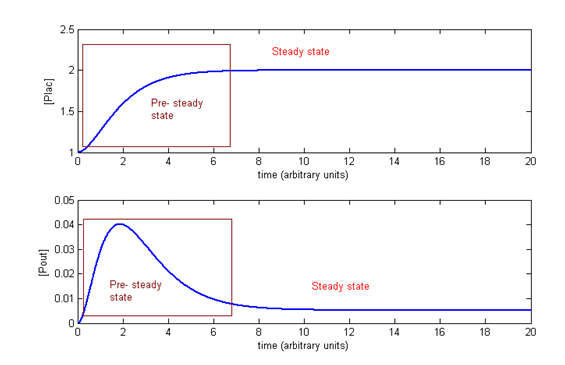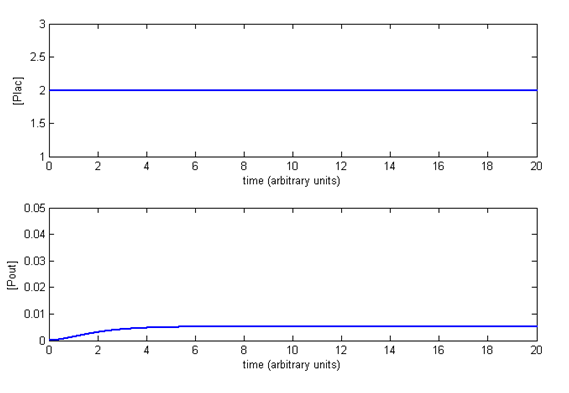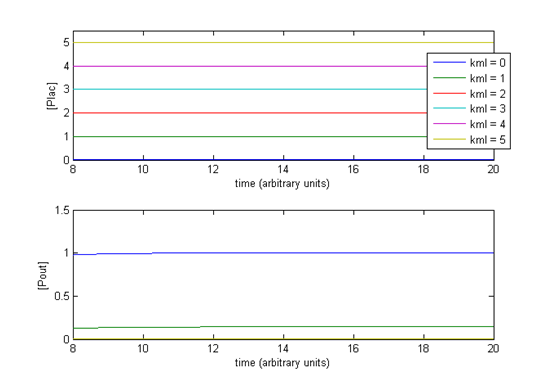Team:Imperial College London/Drylab/Protein production/Simulations
From 2009.igem.org

1.State of PLacI and Pout before steady state:
We can see that between time units 0 and 7 in the top and bottom plot (where [PlacI] = output amount of LacI and [Pout] = output amount of protein) there is a period of transition towards a fixed state. Initially, levels of [PlacI] rise until they reach a constant level, while levels of [Pout] experience a “bump” prior steady state, which settles at a value close to zero when [PlacI] = 2.

We said that expression of LacI protein is constitutive, therefore, the switching on has already taken place. For the purposes of these simulations, we will assume that prior IPTG induction, levels of [PlacI], and consequently, [Pout] were originally at their values of steady state, as shown below:

2.How strength of Lac promoter affects initial repression of Pout (assuming we start at steady state):
Strength of the Lac promoter is associated with the PoPs output (kml). In these simulations we are showing that by varying the strength of the Lac promoter for different arbitrary PoPs values (from 0-5), we can regulate the initial basal expression of protein of interest [Pout]. From the simulations, when levels of Plac are originally low (for a low PoPs output, kml = 0 or 1), we get a high basal expression of [Pout]. This changes when the strength of the promoter is increased (kml=3,4,5), as now levels of [Pout] initially are zero, and virtually repressed. So initial repression of production of protein of interest is effective when the strength of the PLacI promoter is high.

3.How leakiness of Lac promoter affects basal amounts of protein of interest:
From Equation 4, we remind ourselves that [Pout] at steady state is given by:

 "
"



